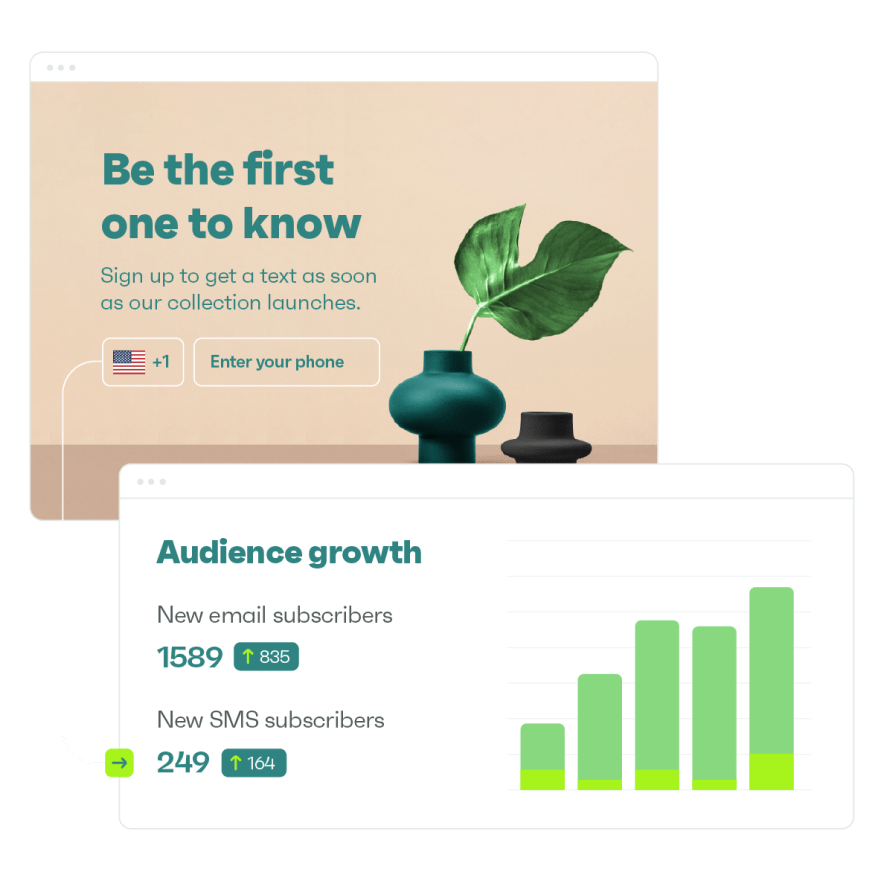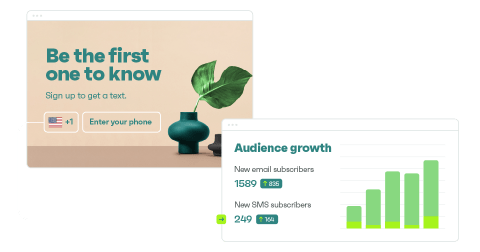Drive sales on autopilot with ecommerce-focused features
See FeaturesEcommerce Website Checklist: Key Elements That Every Online Store Must Implement
Creating an ecommerce website has never been easier than it is today—there are a wealth of comprehensive platforms and tools now available to simplify the process and deliver you a powerful online store.
While this is convenient, all the automation, templates, and plugins can also obscure some basic fundamentals—vital aspects of a well-functioning online store that every retailer must implement. We all want our stores to launch without any embarrassing glitches!
That’s why we’ve put together an essential ecommerce website checklist of things to cover pre-launch. Before setting your baby free out into the big, wide world of ecommerce, make sure you’ve ticked off all of these details first so you can go forth and conquer with peace of mind!
1. General Details
Security:
For today’s ecommerce businesses, security is key. To keep your customers’ data secure—and to make sure Google flags your site as “secure”— ensure your ecommerce store has an SSL certificate. For extra layers of security, you can set up a firewall to protect from attacks, and always make sure your WordPress or other publisher is updated with the latest version.
SEO:
Getting your SEO right from the very beginning will give you a good headstart on other new online stores. You can delve deep down into the details as you go along, but for starters, there are a few basics that can be easily set up with free tools like Google Analytics or Yoast.
- Start by optimizing your meta descriptions to make them as compelling as possible—these are the first thing a customer will see on a search.
- The same goes for your product/page titles—keep them concise and descriptive, containing your keywords and written with your audience in mind.
- Include accessibility options like subtitles on videos, large fonts for the visually impaired, and alt text so Google can ‘understand’ your images.
- Maintain a clear and descriptive URL structure.
- Submit an XML sitemap to Google so it has a clear understanding of the structure of your page.
Legal:
Having an easily-located legal framework on your site is essential to helping your customers understand your policies and how you plan to use their data. Having your protocols clearly spelled out can help protect you from potential lawsuits. If you’re unsure of how to do this, hiring a lawyer to cover your bases is a great idea.
For your customers, the most important thing is likely to be your returns policy. Detail exactly how to make returns, how refunds will be deposited, and who pays for shipping.
Give your customers peace of mind by outlining your privacy policy, clearly explaining how their data will be handled and used, and don’t forget to consider GDPR if dealing with EU customers. Everything can be clearly presented in a Terms and Conditions section, located clearly on your website.
2. Pages & Products
Homepage:
First impressions count, so your homepage should convey professionalism, capture attention with high-quality images showing your best-selling products, be easy to navigate, and direct customers smoothly toward the checkout page.
Things to consider include:
- An attractively designed logo
- Easy links to the most popular products
- Clear call-to-action buttons
- A search field for easy navigation
- User testimonials for social proof
- A space to display any specials or promotions you might be running
Product Pages:
Consistency is key across your site, but particularly on your product pages.
- Keep your images, titles, and descriptions the same size and style across all categories to maintain a professional look, something that also lends credibility to your site.
- Use social proofing, such as by including ratings and reviews below each product. Take it one step further by providing an easy option to share on social media.
- At the same time, be sure to avoid clutter! Delete any broken links, include filtering options, and aim for a minimalist design for easy navigation.
- Check the speed of these image-heavy pages to make sure that they load quickly. There are tools that can help you with this.
- Other things to consider include:
- Zoom-in and 360-degree functionality on your images for thorough viewing
- The ability to choose purchase quantities
- Prominent add-to-cart buttons on each product
- Videos showcasing the products in use
Other Pages:
There are a few pages that all good ecommerce websites will include, pages that you should make sure you offer too.
- Start with an About Us page, where you can tell your story and give your customers a good background of exactly what kind of company and people you are.
- You will also need a Contact Us page. It’s vital that customers can reach you if they have any issues.
- A chatbot can be useful for basic queries, but nothing can replace the ability to talk to a real-life person. This also builds trust and credibility for your site.
- Many questions can be easily anticipated and answered by offering a FAQ page. This can save time for both you and your customer by addressing common issues before any need to reach out in person.
You can add value to your site with educational pages, featuring tutorials, news related to your products, blogs, and other compelling content—this will bring new visitors to your site and help to boost your reputation in your particular field.
Other pages to consider include:
- Various legal pages including the aforementioned Terms and Conditions, and your Privacy Policy;
- A shipping information page;
Oh, and don’t forget to delete any test or sample pages you may have left behind during the construction of your website!
3. Shopping Cart, Payments, Checkout and Shipping
Shopping Cart:
Use your shopping cart to guide your customers through the purchasing process quickly and efficiently—any glitches or unexpected delays will quickly lead to abandoned carts.
- Do you have a way to reach out to customers who abandoned their carts? With over 70% of visits resulting in this unfortunate situation, having a way to rectify it is definitely a good idea!
- Signed-up customers should be able to quickly access important information like order history, billing information, and tracking numbers. But don’t force customers to sign up or create an account before purchase—this is a surefire way to stop potential buyers in their tracks!
- You can allow customers to use their cart as a kind of ‘wish list,’ a place where they can store desired products for easy purchasing later on. If you do this, create an automation workflow that’ll suggest saved items to upsell during checkout.
Payments:
Accept as many payment methods as you can, and check that they are all working as they should before launch. Also, do a test purchase using incorrect information such as a billing address or credit card expiry date, for example. Does a correct and informative error message appear? This is an important detail that lets the customer know exactly what the issue is.
Checkout:
Test your checkout process from start to finish, from putting something in your cart to shipping options, and finally making the payment.
- Eliminate any friction in the process and make sure your security and payment credentials are clearly shown throughout.
- Display an approximate shipping date, or if you’re selling a digital product, clearly outline how the product will be received.
- Don’t forget to make the checkout process a visual and attractive one with nice imagery—you can also display the amount that customers saved by shopping with you. Everyone loves a good deal!
Shipping:
Double check your shipping origin address, which is used to calculate the cost of shipping to your customers—especially if you ship from a different location than your primary address. This way, your customers will receive an accurate shipping cost quote, with no nasty surprises.
- Test your various shipping options (weight-based, product-based) to make sure that your shipping calculations are accurate.
- Offer as many shipping methods as you can, and check the availability of all with different shipping locations.
- Are your shipping labels and various shipping supplies (boxes, paper, envelopes, bubble wrap, etc.) in stock and ready to go?
- Finally, try to offer the lowest cost shipping you can afford and even free shipping for those who spend a certain amount. Your customers will thank you with their continued patronage.
4. Analytics & Tracking
Reporting on the performance of your website and its various features is a must-have—otherwise, how will you know what’s working and what could be improved? Facebook Pixel, Shopify Reports, and Google Analytics are all great tools for starters. These tools collect in-depth data about your visitors, helping you to understand pre-purchase shopping behavior and product performance.
Accurate, real-time information allows you to implement immediate action to support your performance and revenue while making your site a better experience for your customers. It’s better to have your analytics and tracking in place and ready to go before launch so you can start collecting data immediately, rather than trying to catch up as you go along!
Final Thoughts
Work your way through these areas of your site before launch to ensure that you have these basics covered. Clearly, developing an ecommerce website is a dynamic, constantly evolving creation—it’s going to need plenty of nurturing and improving as time goes on. But if you start from a solid base by implementing all the suggestions mentioned above, you’re giving your site the best possible chance of success!
quick links
related features
No fluff, no spam, no corporate filler. Just a friendly letter, twice a month.


